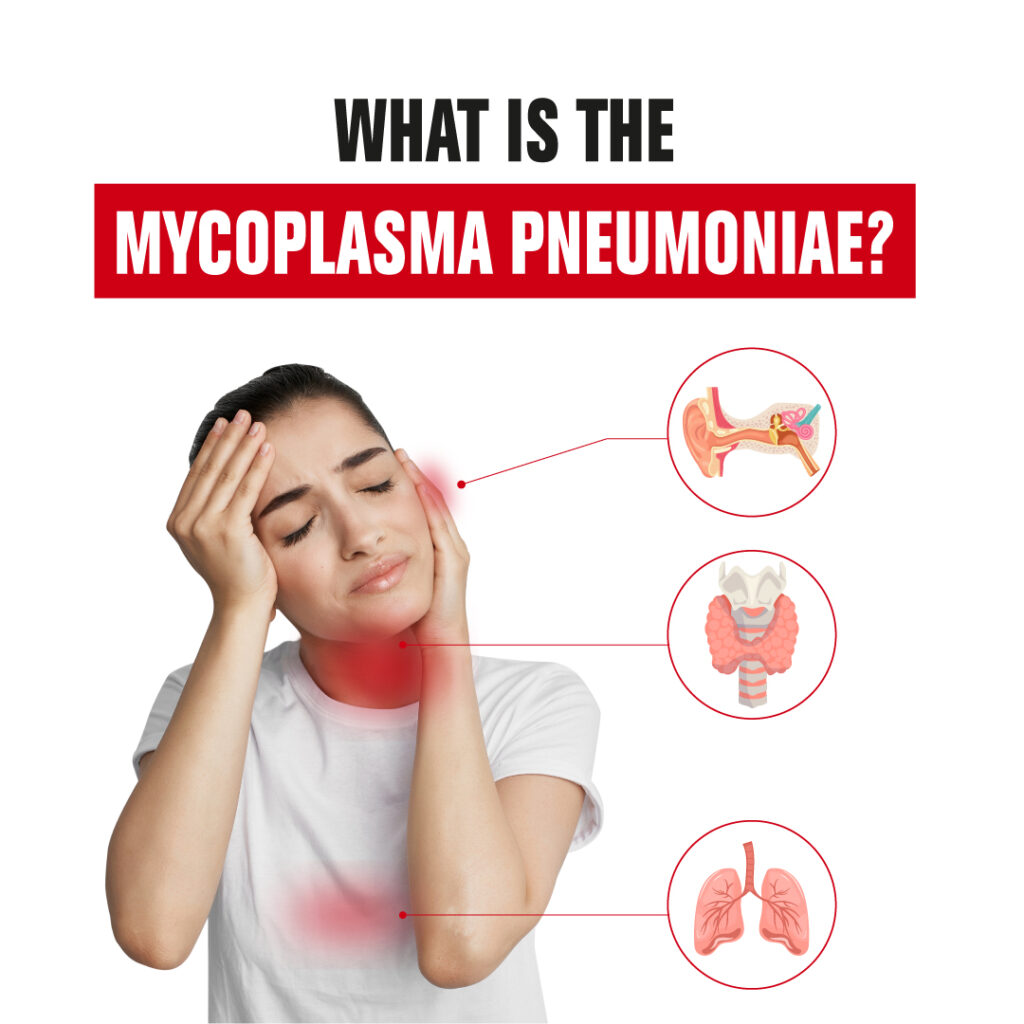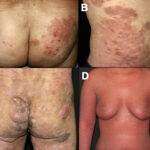Mycoplasmal pneumonia, often referred to as “walking pneumonia,” is a mild yet persistent respiratory infection caused by Mycoplasma pneumoniae. Unlike typical bacterial pneumonia, this condition progresses gradually and is commonly seen in children, young adults, and individuals in crowded environments such as schools and military barracks. Understanding the symptoms, diagnostic methods, and treatment options is crucial for effective management and prevention.

Causes and Transmission of Mycoplasmal Pneumonia
Mycoplasma pneumoniae is a unique bacterium lacking a cell wall, making it resistant to beta-lactam antibiotics such as penicillin. It spreads through:
- Respiratory droplets – Coughing and sneezing release bacteria into the air.
- Close contact – Transmission occurs in schools, dormitories, and military camps.
- Contaminated surfaces – Though less common, the bacteria can survive on objects for short periods.
Symptoms of Mycoplasmal Pneumonia
The symptoms of Mycoplasma pneumoniae infections develop gradually over 1–4 weeks and may include:
- Persistent dry cough – Often worsens over time
- Sore throat – Can mimic viral infections
- Fatigue and weakness – Common due to prolonged infection
- Low-grade fever – Mild but persistent
- Chest pain – Due to inflammation of lung tissue
- Shortness of breath – In severe cases
- Headache and muscle pain – Common in systemic infections
Risk Factors for Mycoplasmal Pneumonia
Certain individuals are more susceptible to infection, including:
- Children and young adults
- Individuals living in crowded settings
- People with weakened immune systems
- Those with chronic lung conditions such as asthma
Diagnosis of Mycoplasmal Pneumonia
1. Clinical Evaluation
Doctors assess symptoms and listen to lung sounds for signs of atypical pneumonia.
2. Laboratory Tests
- PCR Testing – Detects Mycoplasma pneumoniae DNA in respiratory samples.
- Serology Tests – Identifies antibodies indicating a recent infection.
3. Imaging
- Chest X-ray – Reveals diffuse lung infiltrates but lacks specificity.
Treatment Options for Mycoplasmal Pneumonia
1. Antibiotic Therapy
Since Mycoplasma pneumoniae lacks a cell wall, antibiotics targeting bacterial protein synthesis are effective:
- Macrolides (Azithromycin, Clarithromycin) – Preferred treatment for children and adults.
- Tetracyclines (Doxycycline) – Used in older children and adults.
- Fluoroquinolones (Levofloxacin, Moxifloxacin) – Alternative for adults.
2. Supportive Care
- Rest and hydration
- Over-the-counter pain relievers for fever and body aches
- Cough suppressants for persistent cough
Potential Complications of Mycoplasmal Pneumonia
Although generally mild, untreated cases can lead to:
- Severe pneumonia – In vulnerable populations such as the elderly
- Extrapulmonary complications – Including encephalitis, hemolytic anemia, and skin rashes
- Asthma exacerbation – In individuals with pre-existing respiratory conditions
Prevention Strategies
- Frequent handwashing – Reduces bacterial transmission
- Avoiding close contact with infected individuals
- Wearing masks in crowded settings
- Vaccination research – Currently, no approved vaccine exists, but research is ongoing
Mycoplasmal pneumonia is a common yet manageable respiratory infection. Early detection, antibiotic therapy, and preventive measures are essential to controlling its spread and minimizing complications.

